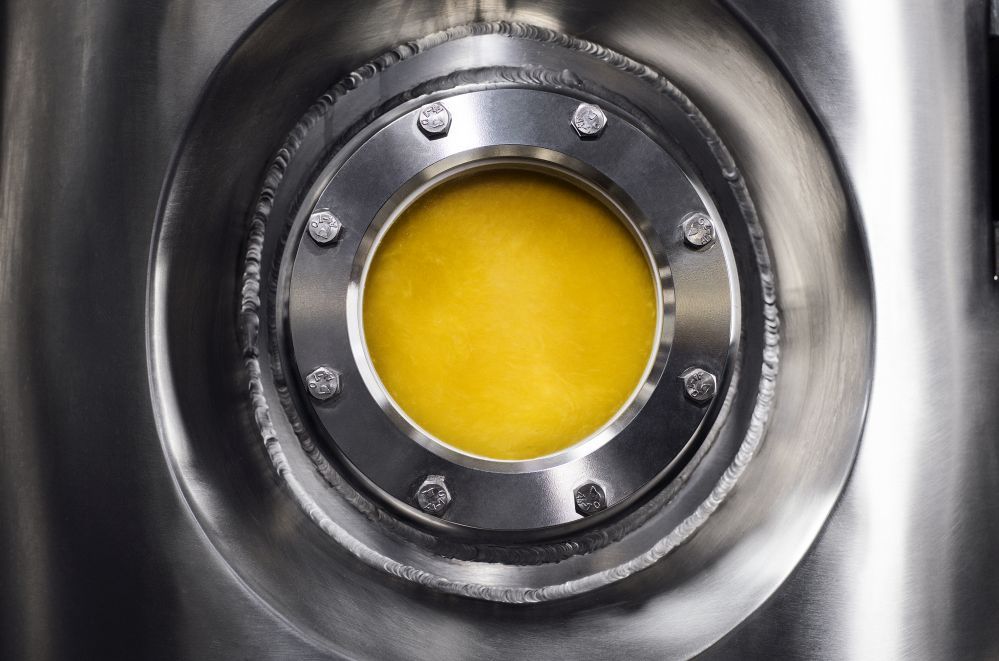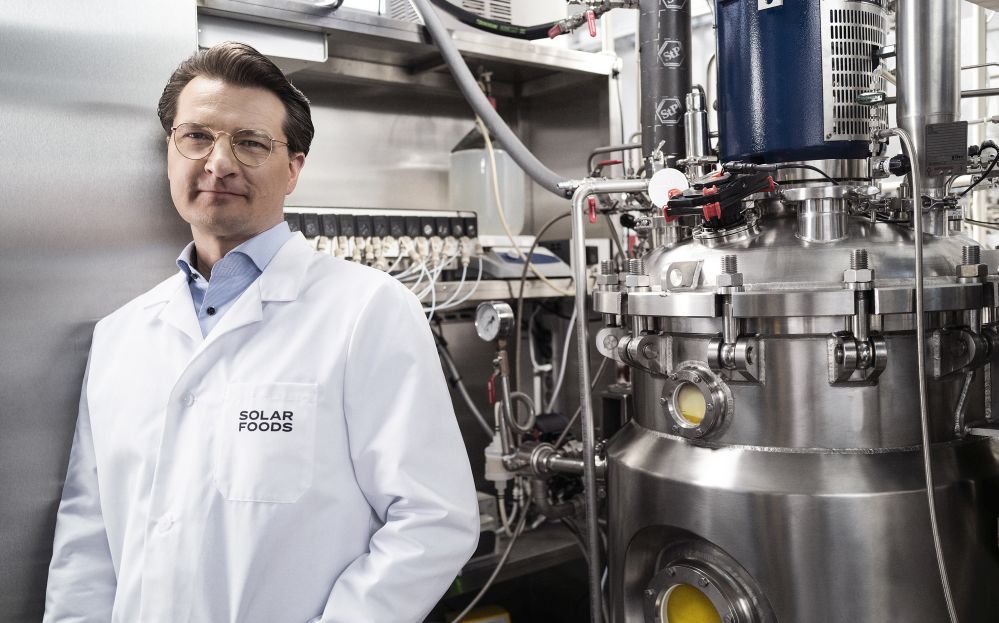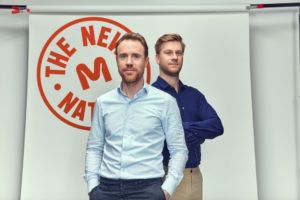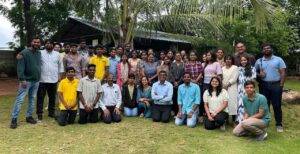Finnish startup Solar Foods—which makes a yellow, protein-packed ingredient called Solein by feeding microbes elements from the air—is planning to go public via a technical listing on the Helsinki Stock Exchange.
Unlike a classic IPO (initial public offering) whereby a company raises capital by issuing new shares to the public, a technical listing enables a company to list existing shares on a stock exchange without raising new capital. This is typically done to enhance visibility, provide liquidity to existing shareholders, or as a strategic move to prepare for future capital raises or acquisitions.
CEO cofounder and CEO Pasi Vainikka told AgFunderNews that the “reason for listing is access to growth capital to industrialize cellular agriculture,” adding that “the possible new capital raised later will be used to execute a strategy around biology, technology and M&A.”
Decoupling food production from agricultural land
Solar Foods, which was founded in 2017 as a spinoff from VTT Technical Research Centre of Finland and LUT University, recently started production at its demo facility (‘Factory 01’) near Helsinki, which has a capacity of 160 tons a year.
The firm, which has recently hired a CCO and CFO, is one of a small, but high-profile group of startups attempting to decouple food production from agricultural land. Solar Foods uses carbon dioxide and hydrogen instead of sugars to feed its bacteria.
Assuming the energy-intensive parts of the process are powered by renewables, says the firm, the technology has clear environmental benefits over animals for protein production: lower emissions, reduced water and land use, and the ability to locate plants nearer to the end consumer.
Solar Foods has secured novel foods approval for Solein in Singapore and hopes to be self-GRAS (Generally Recognized as Safe) in the US by this summer. It has also submitted a safety dossier to EFSA (European Food Safety Authority) for EU approval as a novel food.

‘Electricity is about half of our production costs’
Speaking to us last year, Vainikka said: “Based on the process we have today, we believe we are already cost competitive against whey, pea, and soy protein isolates if we operate at large commercial scale, which would be thousands or potentially tens of thousands of tons per year.”
Asked about rising electricity costs, he said: “Electricity is about half of our production costs, mostly for the electrolysis process. So yes, the viability of our process depends on which country you are in and what type of electricity market it has, so you need an efficient electricity market where you operate.”
According to Vainikka: “The front end of the factory is similar to an oil refinery, the middle part is like a brewery, and the downstream part is like dairy.
“Our fermenter is like a big SodaStream. The main feedstocks are carbon dioxide gas, hydrogen gas, some oxygen and then some nitrogen in the growth media, water solution ammonia, and then some nutrients that plants typically take through roots.”
He added: “We use electrolysis to get the hydrogen [using electricity to split water into its constituent parts, hydrogen and oxygen], which we bubble through our fermenter using pipes. Right now we source liquefied carbon dioxide, which you can get from different industrial sources.
“But we also source about 10-20% [of the C02 used in the production process] from a direct air capture device connected to our ventilation system at our headquarters, so when we exhale C02, we use that as a feedstock for our production as well to demonstrate we’re making food out of thin air. But of course there’s a whole direct air capture industry developing, so we are candidate customer for that.”
Funding
Solar Foods had raised about €43 million ($47 million) in equity and about €30 million ($32 million) in debt financing and sale and lease back agreements for the demo factory, plus grants, including an IPCEI [Important Projects of Common European Interest] grant as a ‘clean hydrogen’ company, said Vainikka.
“We have a €34 million ($36.2 million) IPCEI grant at our use for factory 01 and a further €76 million ($81 million) is earmarked for factory 02 [a large-scale commercial facility] if we were to build on European soil.”




